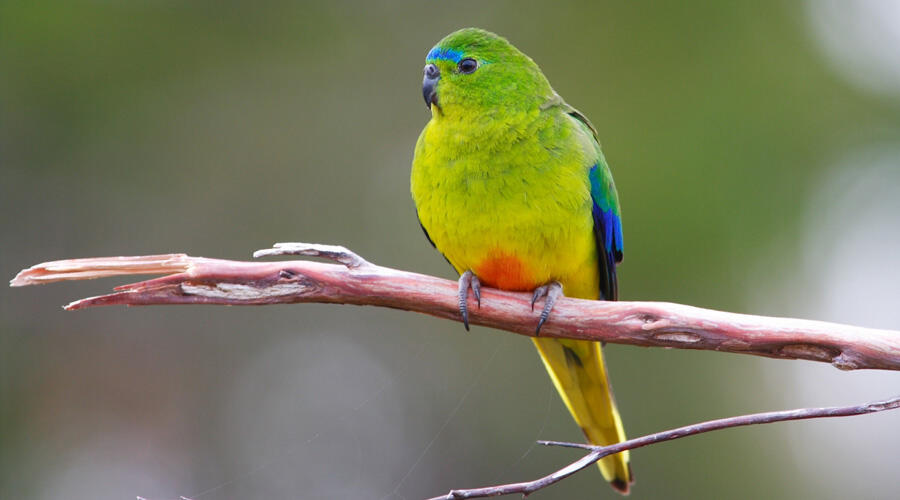Captive breeding efforts to save the Critically Endangered Orange-bellied Parrot Neophema chrysogaster – Australia’s rarest bird with perhaps as few as 50 individuals in the wild – have suffered a major setback.
Fourteen Orange-bellied Parrots were killed by rats during late 2015 at the Taroona (Hobart) captive-breeding facility, which is run by Tasmania’s Department of Primary Industries, Parks, Water and Environment.
The affected birds were being held separately in quarantine from the main breeding stock, as they were suffering from Psittacine Beak and Feather Disease (PBFD). Following the killing of two parrots during October and November, in early December a more serious incident led to the death of the remaining birds. (In May 2013 two Orange-bellied Parrots in the same facility were killed by a cat that breached the perimeter fence.)
The Australian Federal Environment Minister, Greg Hunt, labelled the latest incident as “deeply disturbing”, prompting Matthew Groom, Minister for Environment, Parks and Heritage for Tasmania to defend his government department: “The deaths of birds within the captive population has been taken seriously by the Tasmanian Government.” He stated that he has been assured that since the incident security standards at Taroona have been significantly enhanced.
Paul Sullivan, Chief Executive of BirdLife Australia commented: “These incidents clearly show the danger of allowing wild bird populations to decline until they rely on captive insurance programs. It’s tragic to lose any Orange-bellied Parrots; we need to learn from the incident and pull together to keep this bird from going extinct.”
BirdLife Tasmania has called for a wide-ranging enquiry into the deaths of the parrots. Its Secretary, Sue Drake, said: “Clear transparency on the management of the Orange-bellied Parrot crisis is needed if we are to save this bird.”
Orange-bellied Parrot is a small, attractive ground-feeding parrot, slightly larger than a Budgerigar Melopsittacus undulatus, with rich-green plumage and a small patch of orange on its belly that gives it its name.
The parrot is known to breed at just one site, Melaleuca in the south-west of Tasmania, before migrating to the Australian mainland to winter on saltmarshes in Victoria and South Australia (historically, the species has also been recorded from New South Wales).
Since 2005, when the wild population was estimated at around 150 individuals, the species has undergone a rapid decline, with surveys in 2010 finding fewer than 50 birds at Melaleuca, and no birds at other historical breeding sites. The main reason behind the decline is thought to be the fragmentation, degradation and loss of the species’ wintering mainland habitat as a result of increased grazing, agriculture and urban/industrial development. With such a small, remnant population the species is also susceptible to disease; an outbreak of PBFD in 2015 affected 19 out of 26 wild Orange-bellied Parrot nestlings tested. Other threats include invasive mammalian predators such as foxes and cats, competition from introduced birds including Common Starling Sturnus vulgaris, and degradation of breeding habitat in Tasmania.
To try and mitigate these declines there is a well-established captive-breeding programme, with just over 200 Orange-bellied Parrots held at various facilities on Tasmania and the mainland as of July 2012. The aim is to grow this to at least 350 birds by 2016–17.
More-promising news has recently come from the wild population at Meleleuca, where 21 birds had returned by the end of October 2015, including two birds ringed as fledglings at the site in 2014 – indicating that they had successfully undertaken their arduous migration for the first time.
Source: birdlife.org











